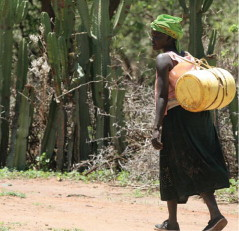
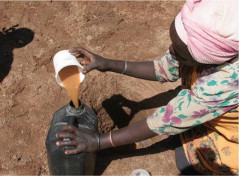
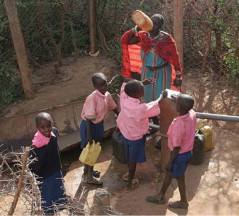
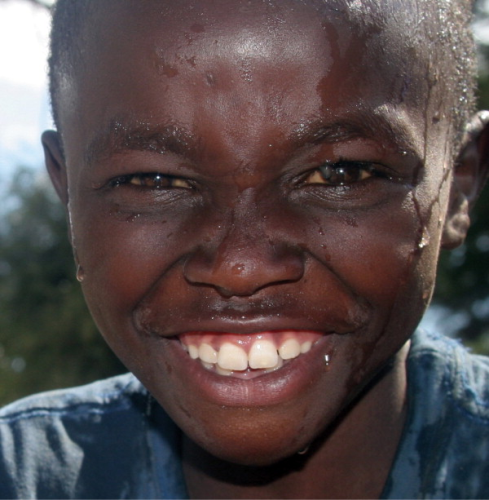
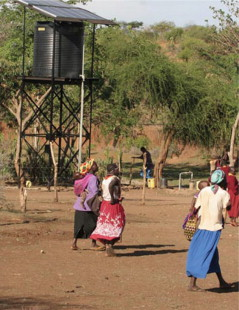
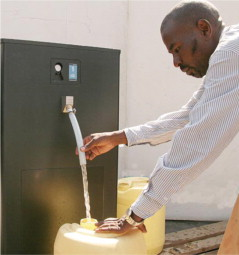
From January 2009, inhabitants of a number of Kenyan villages will be able to tap safe drinking water from their own high tech water systems using mobile phone technology and solar energy. Grundfos designed this new system, called LIFELINK, to provide a sustainable water supply solution, which will be tested in Kenya as a pilot project during 2009 before being rolled out to other countries in East Africa, Asia and Latin America. LifeLink, a new company, within the Grundfos group, has been set up to develop, sell and service the systems and is Grundfos' first step into a huge market, consisting of more than two billion people in developing countries worldwide who are today without access to safe drinking water. Grundfos establishes separate LifeLink companies in each country in which it launches the system, and the first of these is already established in Kenya.
A sustainable solution
Sustainability is the keyword, both environmentally and financially. Traditionally, water solutions have been donated, eventually leaving rural communities without resources or the ability to maintain or repair the systems when something goes wrong. In contrast, a LifeLink system is not a donation. Communities buy it and repay the investment over a relatively short span of years, usually five, by paying an affordable price for each litre of water they tap. The water payment takes place using a smart card which is inserted into the water tapping unit after being loaded with value from a mobile phone. LifeLink facilitates the financing via local microfinance institutions and banks. The whole payment chain is closed and no cash is transferred among people.
Proven technologies
LifeLink is a combination of Grundfos’ well known and well proven technologies, including its range of SQFlex solar-driven submersible pumps. SQFlex is combined with solar panels which cover an elevated water storage tank, from which gravity leads the water to the water tapping point. This is not just a traditional water tap but a 'tapping station’ with two or three automatic water tapping and payment points, linked to a computer that registers the values loaded to the smart cards or ‘water keys’ of the users. Both GSM and GPRS signals are used in the communication between tapping station, computer and servers.
Every LifeLink system is under constant surveillance and its performance can be monitored remotely via the internet using a Grundfos remote management system (GRM). If a failure occurs on a system, it will automatically send SMS and email messages to a service department in Nairobi who will then take action, sometimes even before the users have noticed something is wrong.
Income from a LifeLink water system accumulates in a community account at the financing bank and is then distributed to the bank for repayment of the loan, payment to a service account and for the salary of the attendant who operates the system each day. In most cases, during the repayment period, there will still be surplus funds left for the community. When the repayment has been finalised, the community can choose to continue paying the same water tariff, which would leave a substantial profit for the community to start up other projects and generate new income possibilities for the inhabitants – or they can lower the tariff so it still covers service and maintenance.
Improved access to water not only makes life easier for the inhabitants, but can also generate new income and save time otherwise spent walking long distances or waiting at the water tap. In places where diesel driven pumps are used today, transporting and paying the fuel is a heavy burden that often affects access to water for the inhabitants. With a LifeLink system, some communities can even make business by selling water to less privileged neighbours.
One of the UN's Millennium Goals is to reducing by half the proportion of people without sustainable access to safe drinking water by the year 2015. By the involvement of the communities in actually paying for the use of the water systems, Grundfos wants to contribute in reaching this goal.




